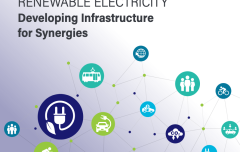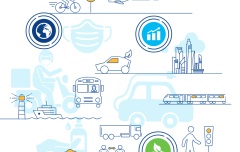Energy Efficiency in Transport
Why is transport important?
Transport accounts for roughly one fifth of global energy-related CO2 emissions. The sector relies heavily on oil despite a fast growth in electric vehicles,
Are we on track?
Between 2010 and 2021, the energy intensity of passenger transport improved at an annual rate of 1.6%. In contrast, the energy efficiency improvement for freight transport slowed down to 0.4%. Improvement in passenger transport is driven by the uptake of electric vehicles in key markets such as Europe and China.
Energy and mobility nexus
The Energy and Mobility Community of Practice under the Sustainable Mobility for All (SuM4All) umbrella considers the energy implications of the transition to a low carbon and sustainable transport system. SEforALL co-led efforts within this working group together, with the High Volume Transport Initiative and the Climate Compatible Growth Program, to improve knowledge and raise awareness of sustainable solutions at the nexus of energy and mobility in developing countries.
Starting from the Global Roadmap of Action toward Sustainable Mobility (GRA), three policy measures are considered to reduce greenhouse gas emissions (GHG) and promote low emission mobility:
- Promote public discussion on new mobility solutions (in collaboration with the SuM4All Sustainability of the E-Mobility Model working group): promote public discussion about new mobility solutions
- Expand public transport infrastructure: with transport networks adjusted to demand requirements, with an emphasis on equitable access, including to bus, rail, demand-responsive service, cable-propelled transport and ferry transport
- Plan for freight integrated multimodal transport networks:optimal location of transport corridors, linear facilities, and hubs, based on the analysis of freight origins and destinations, including a rail network development plan.
Electrification and e-mobility
The Transformative Urban Mobility Initiative (TUMI) and the International Association of Public Transport (UITP) previously led the Sustainability of the E-Mobility Model working group under the Sustainable Mobility for All (SuM4All) umbrella.
Starting from the SuM4All GRA, this working group developed policy recommendations for international development, national and local public policy communities: 1. Vision (targets and awareness); 2. Policy (policy framework for regulating and stimulating action and integrating mobility and energy policy); and 3. Implementation (pilot projects, capacity building, and financing tools).


